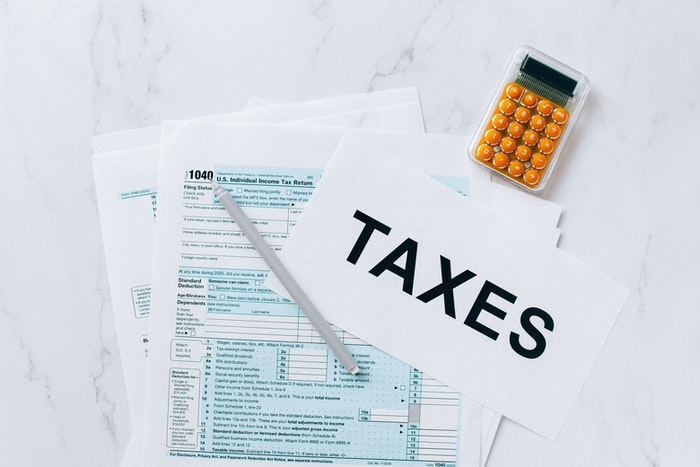It probably comes as no surprise that tax compliance is unpredictable and difficult to navigate, much like almost everything we’ve experienced in recent years. Controllers, accounting and finance professionals, or just about anyone who deals with tax will benefit from keeping up to speed on the macro events that impact business as usual.
2021 was a remarkable year in many respects: We endured an unyielding pandemic, a volatile economy, myriad supply chain and labor shortage issues, and just about everything else to keep us guessing at what tomorrow would bring.
Here’s a look at what shaped the tax landscape:
- 96% of midsize businesses and 65% of small businesses in the U.S. changed in response to COVID-19
- Shipping freight costs surged by 323% between September 2020 and September 2021
- More than 60 countries have electronic invoicing requirements
- 183+ countries will adopt the new Harmonized Tariff Schedule on or after January 1, 2022
- The EU and K. have eliminated VAT exemptions for low-value imports
- 45 states plus Washington, D.C., categorize software up to 10 different ways for tax purposes
Avalara developed a comprehensive report to make a controller’s life in 2022 a little easier. Here’s a quick look at what’s making headlines.
Supply chain and labor shortage woes
The supply chain is proving itself especially vulnerable because of heightened demand, staffing shortages, factory closures, delayed shipping, and many other factors. To make matters worse, transportation costs soared throughout 2021 as a result. For example, shipping container rates from China and east Asia to the U.S. reached $20,000 per 40-foot container up from about $4,500 in the previous year.
To combat the problem, some companies placed purchase limits on high-demand products during the fall of 2021. Other companies took a more creative approach by chartering their own container ships to ensure their products reached the shelves.
Some businesses developed new supply chains and even expanded their own storage capacity: For example, DHL increased the size of its U.S. distribution centers by 70% to help reduce shipping times and keep pace with accelerating demand. DHL’s strategy proved successful: They had on average 33% more ecommerce shipments per day in Q1 2021 than in Q1 2020.
Equally challenging for businesses is a dramatic shortage of labor. Businesses that heavily rely on labor, like restaurants, brick-and-mortar stores, and service providers are struggling to fill positions in a very competitive environment. Currently there are more positions than people available to fill them. This issue creates an even greater kink in the supply chain. To retain existing employees and attract new hires, companies are raising wages, which leads to higher prices. And unlike rising fuel costs, which eventually drop with the price of oil, wage hikes are usually here to stay.
So, how do supply chain and labor shortage issues impact tax compliance?
- For manufacturers and retailers that add new products, are new SKUs exempt or taxable? If taxable, at what rate?
- For businesses that take on new suppliers, are all resale/exemption certificates valid and up to date?
- When using a drop shipper or acting as your own shipper, who’s liable for any tax due?
Tax relief programs come and go
To help businesses that faced mandatory COVID-19 restrictions stay afloat, federal and state governments launched several COVID-19 tax relief measures. By March 26, 2020, the Senate passed the first of several relief programs. Eventually more federal, state, and local relief packages followed, but much of that relief has now ended.
2021 also brought numerous state and local measures aimed at giving businesses more time to file and remit tax. Those that struggled due to the pandemic were allowed to use unremitted tax revenue to cover essential expenses like wages or rent, if necessary. Most of these extensions have expired, and businesses are now liable for all tax revenue collected.
Economic nexus goes local and marketplace facilitator laws expand
Since the last holdout state, Missouri, finally adopted economic nexus in 2021, all 45 states with a sales tax can now tax remote sellers. Controllers must closely monitor sales volume in nearly every state to determine where to register and collect. While state economic nexus laws have steadily made their way across the U.S. after 2018’s landmark decision in South Dakota v. Wayfair, Inc., what’s recently emerged are local economic nexus laws.
Increasingly, local governments in some states are looking for their share of revenue by imposing additional tax obligations on remote sellers — even in states with no sales tax, such as Alaska. Even though sales tax is levied and administered at the state level in most states, local governments have the power to levy and administer local sales tax in a handful of home rule states, several of which are either exploring or have already adopted economic nexus. States with local economic nexus laws include Alaska, Colorado, Illinois, and Louisiana. This could seriously complicate and increase the cost of compliance for many businesses.
In addition to registering with and remitting to the state, companies may need to register with and remit to local tax authorities. And the more places a company conducts business, the harder it is to manage compliance activities manually. In fact, the issue is so complex that a legal challenge is underway in Louisiana. According to the National Taxpayers Union Foundation, “Louisiana could ease the burden on small businesses by streamlining collection to one central collection point.” Louisiana’s complex tax structure could help bolster the argument for a more streamlined approach to enforcing nexus rules.
Like economic nexus, marketplace facilitator laws have been enacted in all states with a sales tax, plus Puerto Rico, Washington, D.C., and a growing number of local governments in Alaska. As was the case with economic nexus, the last state to enforce its law will be Missouri, on January 1, 2023.
Tax goes digital
To reduce a shortage of unremitted tax funds, countries worldwide are digitalizing tax compliance. For many of us in the U.S., this is a new concept. By way of definition, digitalization of tax compliance is the movement by tax authorities to bring paper compliance activities, like invoicing, filing, and remittance, to the cloud. Governments are moving in this direction in an effort to collect on missing revenue, reduce tax risks, streamline the audit process, and lower the cost of compliance.
To date, more than 60 countries have electronic invoicing requirements, with more on the way. However, the U.S. is not leading the charge in this effort, and it may be several years before we see state or federal mandates. However, the pandemic spurred the need for tax authorities to embrace digital options.
Many state and local tax authorities suffered when COVID-19 forced their departments to shift to a remote work model, where digital communication and processes are a must. Liz Armbruester, senior vice president of Global Compliance Operations at Avalara, said: “In what is becoming a digital-first society, reliance on paper-based processes is not only inefficient, but it also increases risk in the event of major disruptive events.”
A baby step toward digitalization is the Federal Reserve and the Business Payments Coalition’s (BPC) pilot project aiming to “modernize business-to-business payments” through the development of a standardized electronic invoicing system. According to a BPC press release, “73 organizations have joined an industry effort to stand up an operational pilot exchange framework to enable businesses of all kinds to exchange electronic invoices (e-invoices). Another 42 organizations will determine whether a similar exchange framework can facilitate electronic delivery of remittance information across all payment types.” The pilot program will run through the end of 2022; an operational B2B invoice exchange network could be ready by 2023.
Integrating new tax technology could allow both businesses and governments to reduce complexity and increase compliance. Digitalizing tax compliance would also help states identify and shore up tax gaps. But with all of these advancements, businesses will need to evolve: With an increase in real-time reporting and digitized tax filing mandates, tax compliance could grow even more challenging for businesses and tax automation will become more top of mind for tax professionals.
Learn more
These are just the highlights for what’s in store for tax compliance in 2022. Ready for a deeper dive? Read the full report here.

Morgan Coleman, senior manager of Web Content Strategy at Avalara and Tax Desk contributor, writes about sales tax laws and the challenges compliance can pose to accounting and business professionals.




